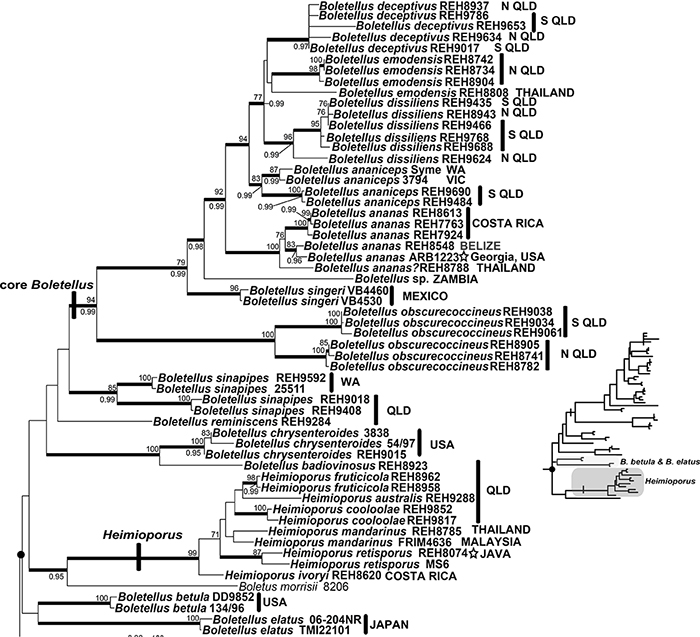From: Halling,R.E., et al. 2015. Evolutionary relationships of Heimioporus and Boletellus (Boletales), with an emphasis on Australian taxa including new species and new combinations in Aureoboletus, Hemileccinum and Xerocomus.
Austral. Syst. Bot. 28(1): 1-22.
Background: Heimioporus was accepted by E.J.H. Corner (1972; as Heimiella) (for the 6 species known to him) who noted a distinctive aspect of spore morphology: no clearly demarcated adaxial patch (plage). In contrast, R. Singer (1986) did not accept the distinction from Boletellus and placed all of those reticulate spored taxa in Boletellus. Interestingly, Corner (1972) relegated Boletellus to a subgenus of Boletus s.l. by virtue of extreme variation in spore shape and ornamentation, basidiome stature and tube trama type.
A portion of a phylogenetic analysis inferred from nucLSU, tef1-α, & rpb2 with ML methods using RAxML was engineered by M. Nuhn. This corroborates a previous analysis by T.W. Osmundson (2009) with more taxa and added geographical coverage. Closed circles indicate a clade that has an alternative topology that cannot be rejected. The alternative topology (inset) places Boletellus and Heimioporus as sister clades; and clades that have different topologies are indicated.
Corner, E.J.H. 1972. Boletus in Malaysia. Singapore. 263 p.
Osmundson, T.W. 2009. Systematic, biogeographical, and ecological perspectives on the diversity and conservation of microbial obligate symbionts, using mycorrhizal boletes (fungi) as exemplar taxa. PhD Dissertation, Columbia University, New York.
Singer, R. 1986. The Agaricales in Modern Taxonomy. Germany. 981 p.
